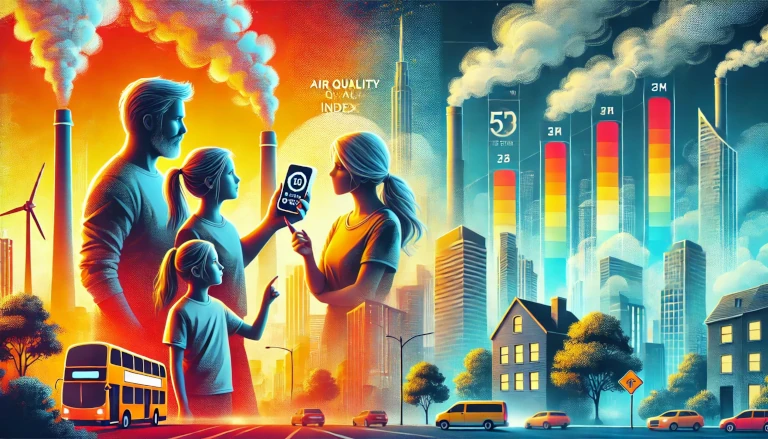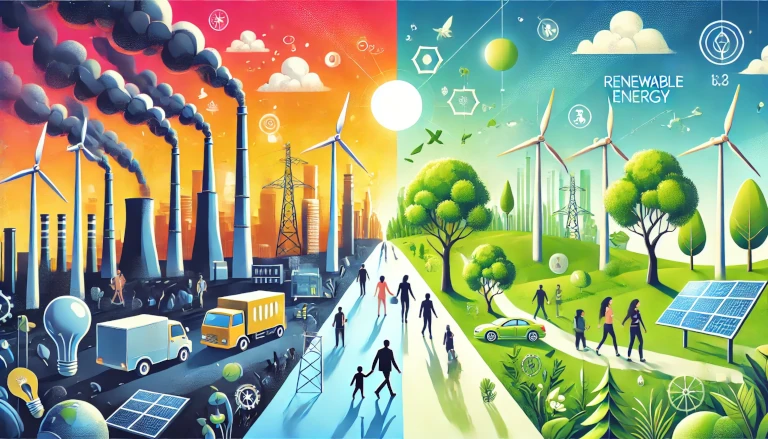Air pollution is one of the most pressing environmental challenges today, affecting millions of people worldwide. It occurs when harmful substances like gases, dust, or chemicals are released into the atmosphere, making the air unhealthy to breathe. These pollutants can come from various sources, including vehicles, factories, agriculture, and even household activities. But how do we measure air pollution scientifically? In this blog post, we’ll explore the concept of air pollution and explain the different methods and technologies used to measure it.
What is Air Pollution ?
Air pollution refers to the presence of harmful or excessive quantities of substances in the air, which can have adverse effects on human health, the environment, and even climate change. The pollutants found in the air can be gases like carbon monoxide (CO), sulfur dioxide (SO₂), nitrogen oxides (NOₓ), particulate matter (PM), and volatile organic compounds (VOCs).
There are two main types of air pollutants:
- Primary pollutants: These are directly emitted from a source, like carbon monoxide from car exhausts.
- Secondary pollutants: These form in the air when primary pollutants react chemically, such as ground-level ozone, which is harmful to respiratory health.
Sources of Air Pollution
Air pollution can come from both natural and human-made (anthropogenic) sources:
- Natural sources: These include dust storms, wildfires, and volcanic eruptions that release large amounts of pollutants into the atmosphere.
- Human-made sources: Most air pollution is a result of human activities, including:
- Transportation: Cars, trucks, and airplanes release pollutants like CO, NOₓ, and particulate matter.
- Industries and factories: Manufacturing processes emit chemicals like sulfur dioxide and nitrogen oxides.
- Agriculture: Fertilizers and pesticides can release harmful chemicals into the air.
- Household activities: Using chemical-based cleaners, burning wood, and improper waste disposal also contribute to air pollution.
Example:
You might notice smog, a thick haze, in large cities like Los Angeles or Beijing. This is a visible form of air pollution, mainly caused by vehicle emissions and industrial activities.
How to Measure Air Pollution Scientifically
Measuring air pollution is crucial for understanding its severity and implementing control measures. Scientists and environmental agencies use various methods and technologies to measure air quality. Here are the main scientific tools used to measure air pollution:
1. Air Quality Index (AQI)
The Air Quality Index (AQI) is one of the most common ways to measure air pollution levels. It provides a numerical value that represents the concentration of harmful pollutants in the air. The AQI focuses on key pollutants such as particulate matter (PM10, PM2.5), sulfur dioxide, nitrogen dioxide, and ozone.
- How it works: The AQI scale typically ranges from 0 to 500. The higher the number, the worse the air quality is.
- 0-50: Good
- 51-100: Moderate
- 101-150: Unhealthy for sensitive groups
- 151-200: Unhealthy
- 201-300: Very unhealthy
- 301-500: Hazardous
Example:
If the AQI in your city is 170, it means the air is unhealthy for everyone, especially those with respiratory issues like asthma.
2. Particulate Matter (PM) Sensors
Particulate matter (PM) refers to tiny particles suspended in the air, such as dust, soot, and smoke. These particles can be harmful when inhaled because they penetrate deep into the lungs.
- PM10: Particles with a diameter of 10 microns or smaller.
- PM2.5: Fine particles with a diameter of 2.5 microns or smaller.
Specialized PM sensors can detect these particles in the air, providing data on their concentrations. These sensors are used by environmental monitoring stations and can also be installed in air purifiers or personal monitoring devices.
3. Gas Analyzers
Gas analyzers are devices that measure the concentration of gases like CO₂, SO₂, and NO₂ in the air. These are essential tools for determining the levels of harmful gases in both urban and industrial areas.
- Example: A carbon monoxide analyzer can measure the amount of CO in the air, which is critical for monitoring air quality in areas with heavy traffic.
4. Remote Sensing Technologies
Remote sensing uses satellites or drones to measure air pollution from a distance. This method is useful for monitoring pollution over large areas, such as cities or entire regions.
- Example: NASA’s satellite-based instruments can track global air quality and provide data on pollutant levels in different countries.
5. Chemical Sensors
Chemical sensors are used to measure the concentration of specific pollutants in the air. These sensors can detect gases like ozone (O₃) or volatile organic compounds (VOCs), which contribute to poor air quality.
- Example: A sensor can detect high levels of ozone in urban areas, which can cause respiratory problems.
Importance of Measuring Air Pollution
Measuring air pollution is essential for:
- Public health: High levels of pollution can lead to respiratory diseases, cardiovascular problems, and other health issues. Monitoring air quality helps authorities warn the public about potential health risks.
- Environmental protection: Air pollution affects not just humans but also animals, plants, and ecosystems. By measuring pollution, we can take steps to reduce its impact on the environment.
- Regulations and policies: Governments use air quality data to create regulations that limit harmful emissions from industries and vehicles.
Air pollution is a global problem with serious consequences for human health and the environment. Understanding what air pollution is and how to measure it scientifically is key to addressing this issue. Tools like the Air Quality Index (AQI), particulate matter sensors, gas analyzers, and remote sensing technologies help us monitor pollution levels and take action to reduce harmful emissions. By staying informed about air quality in your area, you can protect yourself and contribute to a cleaner, healthier environment.
Read this in Marathi at हवेचे प्रदूषण म्हणजे काय आणि त्याचे वैज्ञानिक मोजमाप कसे करायचे? – एक संपूर्ण मार्गदर्शिका
Discover more from Green Ecosystem - Renewable Energy, Agriculture, and Environmental Sustainability
Subscribe to get the latest posts sent to your email.


